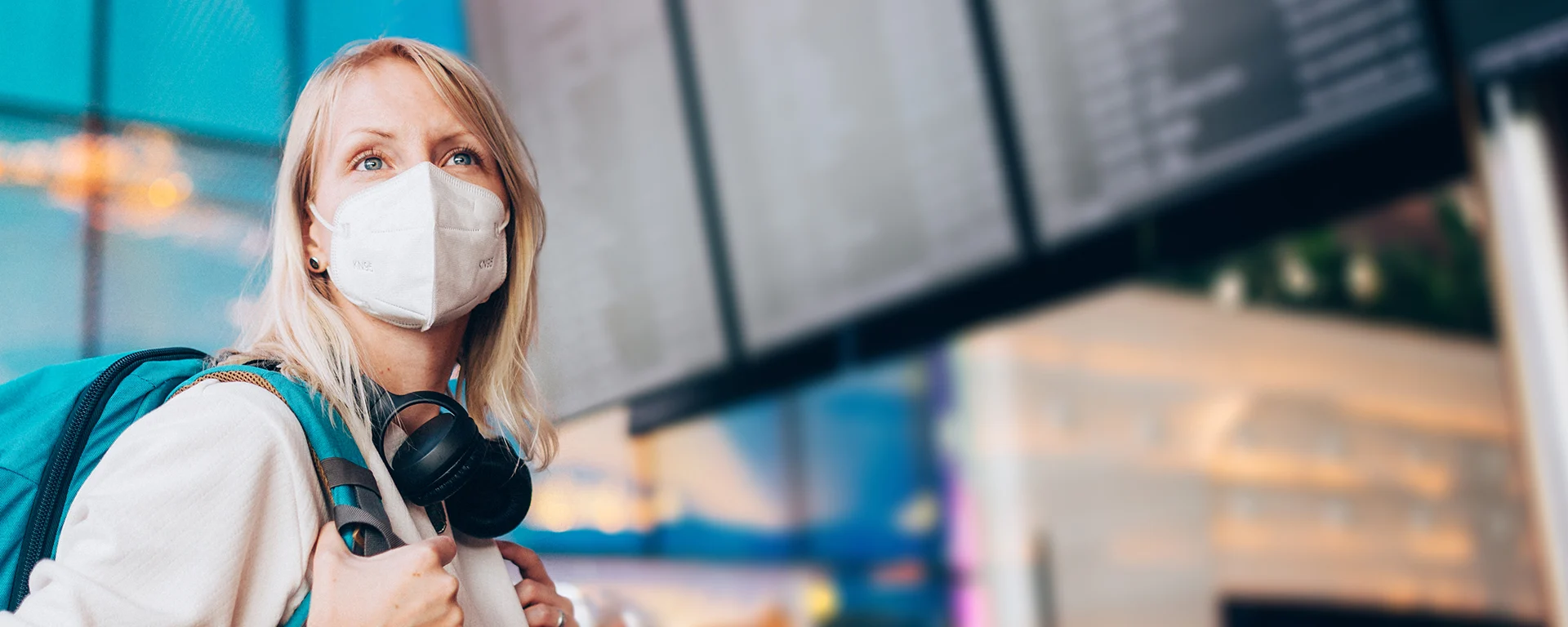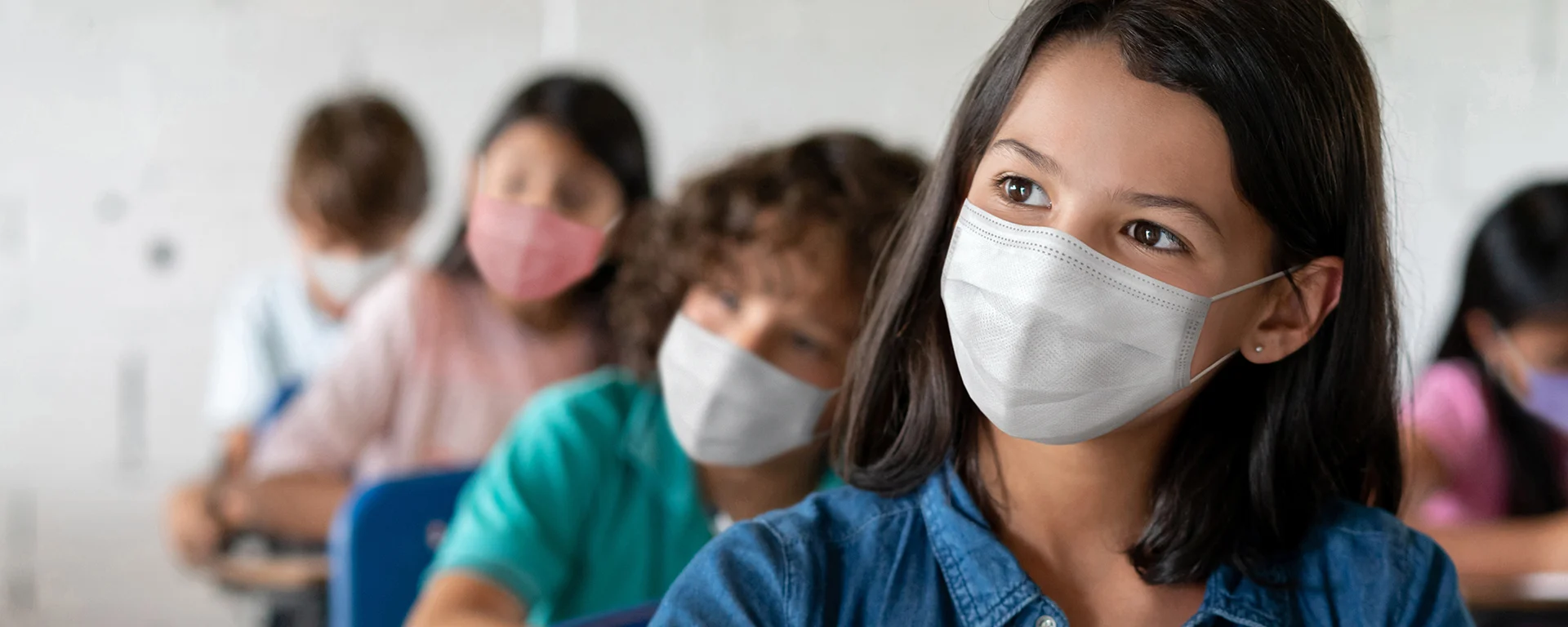Keeping Kids Well — It’s Not Just About COVID
We can use tools we learned about in the pandemic to help keep our kids healthy, out of the hospital, and in school.
December 2022: Every household in the US can order four free rapid tests at covidtests.gov or by calling 1-800-232-0233 (TTY 1-888-720-7489).
The news these days is full of screaming headlines. “Tripledemic.” “Half of Virginia high-schoolers out with flu-like symptoms.” “Children’s hospitals grapple with a nationwide surge in RSV infections.” While we were all watching the Omicron sub-variant parade, another set of viruses sneaked up on us. And this time, it’s the kids who are getting sick.
For now, the culprits aren’t COVID. They’re influenza and respiratory syncytial virus (RSV), both of which started to rise much earlier in the year than they usually do. Just like COVID, these viruses cause the kind of symptoms that we call “flu-like” — cough, runny nose, fever — and can be anything from mild to deadly. RSV, in particular, has been sending an unusually high number of little ones to hospitals over the past month, straining and in some cases exceeding hospitals’ capacity.
Why is this happening?
First, it’s worth remembering that RSV and flu were problems even before the pandemic. RSV typically puts about 60,000 US kids in the hospital every year, and flu sends somewhere between 6,000 and 27,000 there, depending on how bad the season is.
If you don’t have kids, it’s possible you’ve never heard of RSV, but it’s all over the place — in normal times, pretty much all kids get it at least once by the time they’re two years old. (Dr. Jennifer Girotto, an expert in childhood diseases, gives a great overview of the virus in this article.)
But the last two years haven’t been normal, and that’s probably a big part of the problem, especially when it comes to RSV. Because they’ve interacted less with other people, kids haven’t been exposed to as much of that virus as they usually are. Some toddlers haven’t had it yet. Other kids got it a while ago and their immunity has gone down. The end result is that more children than usual are getting sick at one time — especially the littlest ones, who are the most likely to be hospitalized as a result of an RSV infection. And older kids who aren’t getting severely ill are getting sick — and missing school as a result.
It’s tempting to point the finger at COVID prevention strategies and say, “See — if we hadn’t masked up and kept kids away from each other, we wouldn’t be in this mess right now. The kids might have gotten COVID, but COVID isn’t a problem for them.” But that statement doesn’t wash. Not only does it rely on hindsight, but it downplays a real threat:
We knew nothing about COVID when it arrived. Since respiratory viruses are usually most dangerous to children and older adults, it was reasonable at first to assume that COVID would be, too.
While children don’t typically get as sick with COVID as older adults do, they can certainly carry the virus and give it to other people. Tamping down a pandemic isn’t just about individual health — it’s about public health, which means doing things that help everyone, even if they don’t help you personally very much.
Not every child who gets COVID is the “typical” one. In January 2022, during the first, enormous Omicron wave, the coronavirus was the fourth-leading cause of death in kids ages five and up.
What can parents, schools, and day-care centers do?
Just as with COVID, we’re not helpless in the face of these viruses — and our recent experience has taught us a lot.
Parents can:
Get kids vaccinated against COVID and flu, and make sure they’re up to date on their COVID vaccines. Vaccination is the best way to keep our kids from getting severely ill with COVID, and — good news — this year’s flu vaccine is a good match for the strain that’s going around. There’s no vaccine for RSV yet, but one is in development and it’s looking good.
Send kids to school in high-quality masks when there are a lot of respiratory viruses going around.
Encourage good hand-washing habits (flu and RSV are more likely to be spread on people’s hands than COVID, which is mostly an airborne disease).
Keep kids away from folks who are sick, and for goodness sake, don’t send kids to school if they’re ill.
Test themselves and their kids whenever they show COVID symptoms, or five days after they’ve been exposed to someone with COVID (don’t forget to report the results of each test, and test again 48 hours later if you test negative the first time!).
Schools and day-care centers can:
Make sure that the air in their buildings is as clean as possible. If they have HVAC systems, they can use high-efficiency filters — at least MERV 9, and preferably MERV 13.
Check that rooms get enough fresh air, using portable carbon dioxide (CO2) monitors and this tool from Harvard’s TH Chan School of Public Health. (We release CO2 when we exhale. If there’s a lot of CO2 in the air, that means there’s a lot of breath in the air — which could be carrying virus.)
Use HEPA filters in rooms that don’t get enough fresh air.
Require or strongly encourage masks, especially for indoor activities that involve singing, yelling, or breathing heavily.
Install UVGI units in rooms with high ceilings if other ventilation and air-cleaning methods aren’t possible. These units kill viruses in the air using ultraviolet light.
This isn’t an all-or-nothing situation. If you or your child’s school or day-care center can only do one or a few of these things, that’s a help. As we’ve learned over recent years, there’s no such thing as no risk when it comes to infectious disease. But whatever we can do to keep our kids out of the hospital — and if they’re old enough, in school — can only be a good thing.






